
Aguardio
ID: 3967
March 16, 2022
Plug-and-play solution helps save water and energy by nudging people towards sustainable behaviour in the shower.
ID: 3934
February 10, 2022
Emotion S.r.l. is an Italian company specialised in developing innovative, consolidated and reliable solutions in the field of electric mobility. Established in 2014, with the aim of achieving eco-friendly mobility in the cities and reducing environmental impact, the company commercialised the first smart stations for e-vehicles charging.
All research, development and production of the hardware and software components of the smart charging stations are carried out by the 13 employees from the headquarters located in Deruta, Italy. Emotion’s end-to-end solution offers a range of complementary services:
The physical station, enabling e-vehicle recharging, is at the core of the offering. An integrated network called SpotLink facilitates an e-mobility platform as an augmented offering. This connectivity is the unique feature of the solution, as it embeds intelligence in the hardware and constitutes a portal for managing the charging station remotely as well as authorising payment modality.
Emotion caters for the needs of two segments: e-charging station owners (public as well as private companies that have a fleet of e-charging stations) and e-vehicle users (private persons as well as companies that have one or several electric vehicles).
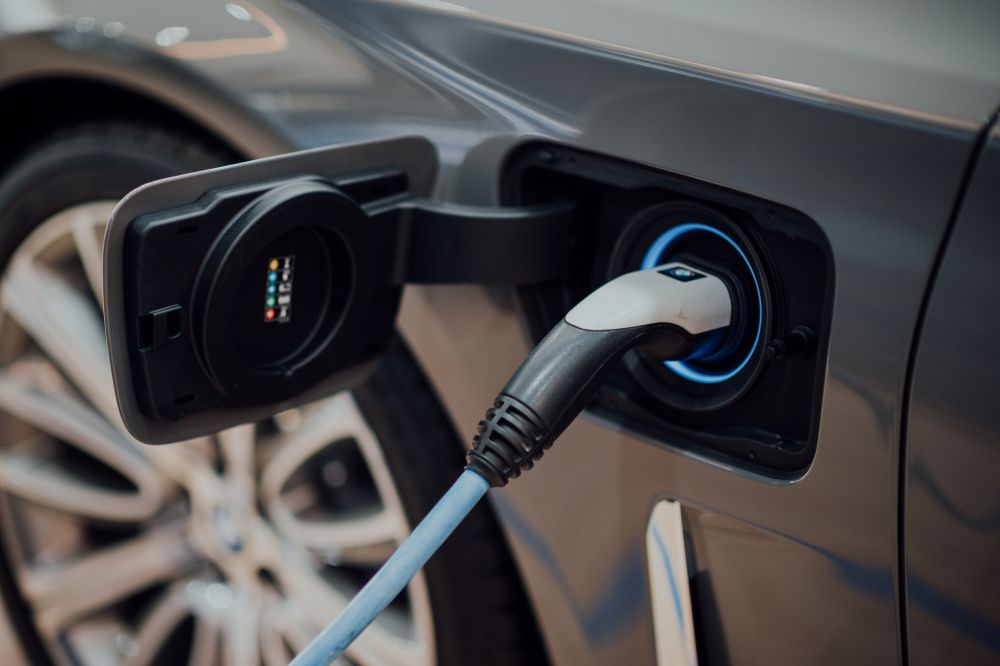
The incentive of Emotion to develop their IoT solution derives from a profound concern for global sustainability. With an acclaimed environmental, social and ethical agenda and responsibility, Emotion strives to accelerate the transition towards renewable energy.
Facilitated by a strong societal request for development and innovation initiatives in the e-mobility domain, Emotion was born from an idea that emerged among a group of Umbrian entrepreneurs to integrate IoT into charging solutions for electric mobility.
“Our charging station not only guarantees the ability to charge electric vehicles, but also the ability to be controlled and monitored remotely. Thus enabling smart use of the charging station”.
Francesco Bellesini, Mechanical Engineer & Project Manager, Emotion
Thus, Emotion knew the beneficial capabilities of IoT as well as the potential synergies that it could create if integrated accurately into electric charging stations. The hardware and the SpotLink software were developed simultaneously to qualify the unique traits of the solution: remotely readable flows of real-time information. This enables the station manager to monitor and control his stations unconditioned by his physical presence; for example, to modify the power output of a station or the energy cost for vehicles.
The choice to develop the charging stations as IoT solutions was also an attempt to broaden e-charging as a phenomenon as well as to increase locational coverage and demand for the stations. Therefore, by providing the smart functionalities, Emotion strives to offer not only a solution but a profit-generating component that is eligible for incorporation into the business model of the purchaser.
“…making not only a product that gives the possibility to charge the vehicles, but also gives the possibility to the purchaser of the charging station to make business from it.”
Francesco Bellesini, Mechanical Engineer & Project Manager, Emotion
The demand for Emotion’s solutions is thereby jointly pulled by e-vehicle owners, who use the stations to recharge, as well as pushed by e-station managers, who use the stations to generate profit, as they receive the payment for the charging sessions performed.
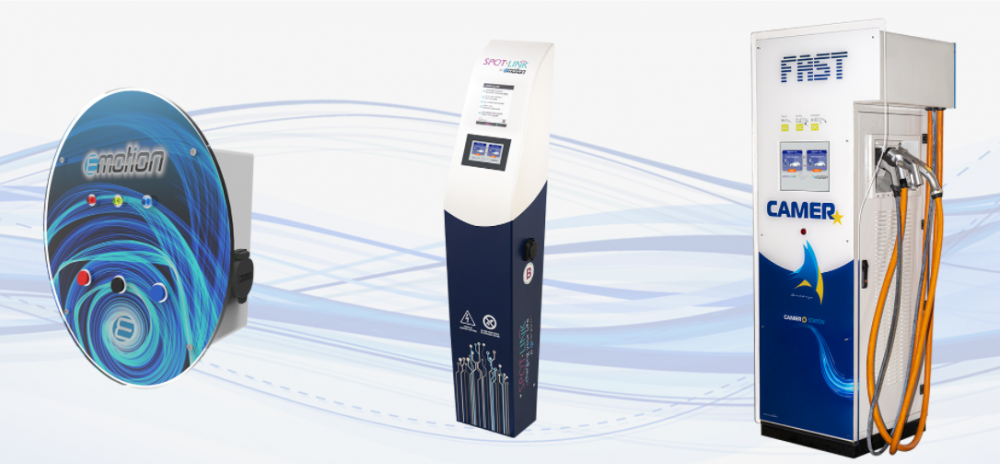
The offering of Emotion is a flexible and modular solution tailored to the specific requirements of the customer. At the core is the hardware in terms of the actual e-charging station, which is available in three basic models to meet a variety of needs from individuals as well as companies:
The main components of a charging station are the devices that provide the power to the electric vehicle (EV) and the device controlling it: an EV charger controller and a PLC[1]. These two electric controller parts communicate with a single board computer (SBC). The SBC enables the charging station to function in offline mode and, when connected online, to collect, process and share with users in real time all data related to the charging session: energy, cost, time and user data.
The charging stations exchange data through a 3G router, using the computer communications protocol WebSocket, which provides full-duplex communication channels over a single TCP[2] connection. The SpotLink network that covers the comprehensive setup of Emotion’s charging stations uses an OCPP[3] standard protocol for communication between the charging station and the Emotion server, which is the central management system.

The SpotLink software facilitates user interaction via the interface of a touchpad display on the charging station and an application (web and mobile). The dedicated application provides a simple and intuitive interface for visualisation and distribution of the data in an individualised and aggregated format (data include station ID, socket ID, socket status, power outputs, start time, charging time, energy provided, charging costs etc.). Besides monitoring the station data remotely, the station manager can, for example, modify values, configure the station, start/stop charging sessions, perform diagnosis and order service repair via the application.
Finally, SpotLink offers a range of technologically advanced services in addition to station management for the benefit of both the station manager and the end user. These services include:
In the normal operation, Emotion’s solution relies on human interaction. However, the smart charging stations are capable of performing autonomous operations as well, for example, in billing and charging management systems, where the station is activated automatically in the case of energy surplus that may derive from solar or wind power plants.
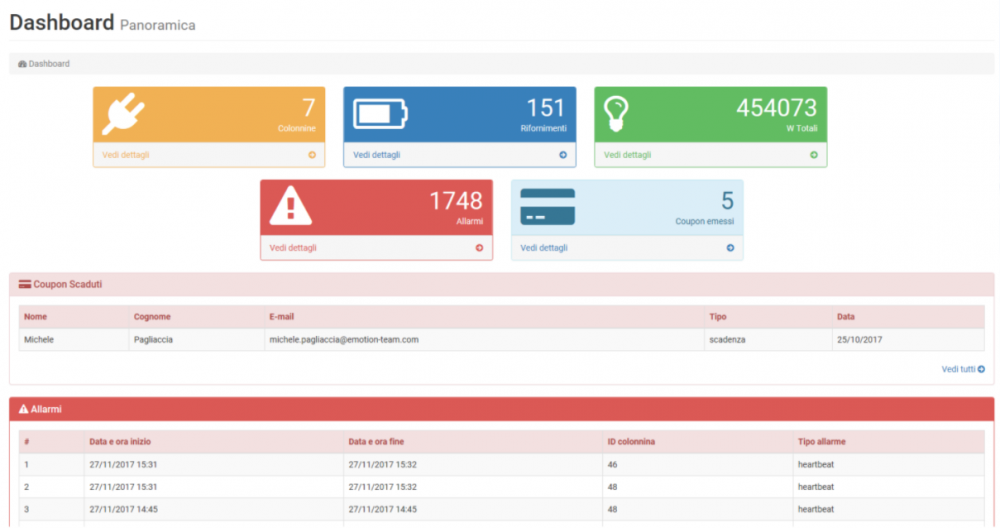
As the Emotion journey was initiated in 2014, the transition towards electric mobility was only at its very beginning in Italy. E-vehicles (and e-charging stations) alone were novel to the market, and when starting to design, develop and provide solutions for e-mobility with IoT integration, Emotion was a bold first-mover.
“We started to sell the products at the end of 2015 and it was like aliens to Italy – the electric vehicles to mobility. Now, the situation is really different.”
Francesco Bellesini, Mechanical Engineer & Project Manager, Emotion
Hence, in the early years of commercialisation, Emotion’s smart e-charging stations did not gain much interest from the market. However, with global environmental awareness increasing significantly during the past half-decade, interest in the e-mobility domain started to transpire. This trend, in parallel with still more advanced possibilities brought by the internet, has offered a solid foundation for Emotion’s solution to gain a foothold and intensify market penetration.
“So we started with a face-to-face approach but we are now increasing our approach using the internet.”
Francesco Bellesini, Mechanical Engineer & Project Manager, Emotion
The direct face-to-face sales were a needed effort in the early life cycle of Emotion’s charging stations. After the first years, both the B2B and the B2C segments increased, and Emotion started pushing the solution through the web media and still reaps benefit from this approach today. The transition substantiates that Emotion was ahead of the market when uniting the two relatively novel technologies and introducing them as their smart e-charging station. Market acceptance and adoption have happened in parallel with the technological evolution in the fields of e-mobility and IoT. Accordingly oriented towards the future evolution, Emotion is constantly advancing their SpotLink network to ensure its market-fit and ability to interact with any type of EV.
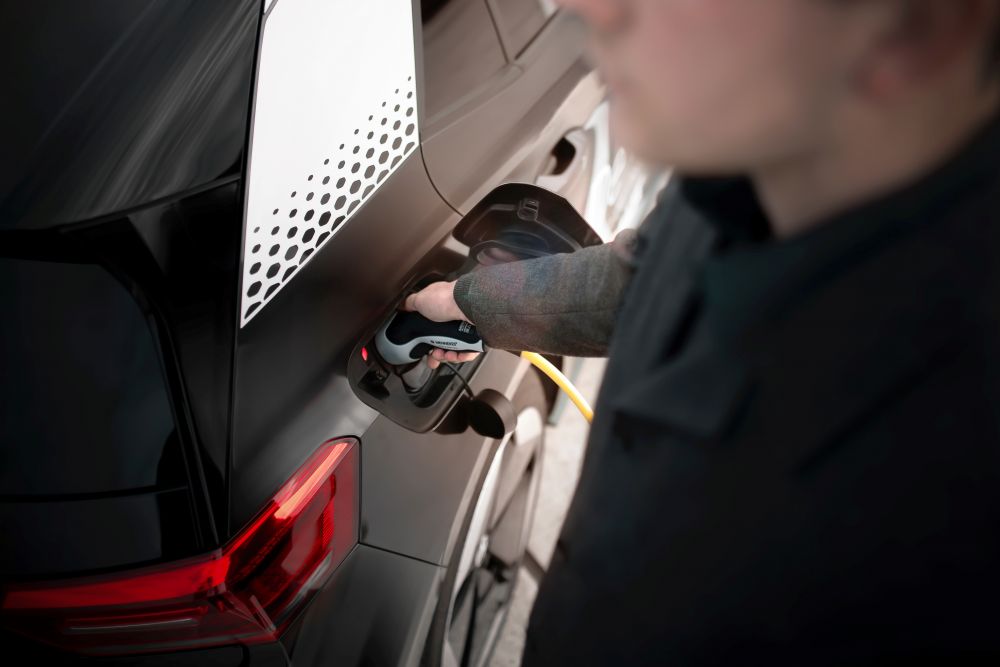
The development of Emotion’s IoT solution is an obvious contribution to the societal ambition of fostering an intelligent and sustainable infrastructure. By rethinking the operational functioning of recharging solutions for e-mobility, the embedded intelligence enables increased control and smarter management of charging stations. This progress directly addresses the concerns about resource scarcity and environmental damage.
“A positive effect is the involvement in research projects for collaboration of electric mobility with the electric grid operators.”
Francesco Bellesini, Mechanical Engineer & Project Manager, Emotion
Emotion engages in the ecosystem to expand the impact potential of their solution. The company continuously seeks to collaborate with authoritative actors in the international energy market to nurture the R&D efforts needed to facilitate high performance of their solution in terms of productivity, reliability and efficiency. Participation in research projects has proved valuable to broaden the network and identify new partners and clients. The consolidated ecosystem strives towards an outcome in terms of a sustainable future and envisions their collaborative effort to radically change the traditional energy market, acquire new market shares, increase international awareness, support investments in alternative fuels and significantly contribute to the decarbonisation of the planet.
The ambition of the solution and the journey of the company are manifested as outcomes in the business operations. Emotion generates profit from the direct sale of charging stations and offers the features brought by IoT for free as part of the solution.
“It guarantees both the sale of the charging station and a constant economic income due to the services associated with it.”
Francesco Bellesini, Mechanical Engineer & Project Manager, Emotion
The services needed to fully exploit the IoT and maintain the stations enable Emotion to deploy a continuous profit mechanism on top of the direct sales by periodically charging the station owner a minor fee.
For users of the solution, the direct outcome is access to recharge electric vehicles. The smart functionalities of the IoT integration are the distinctive traits that create value for the clients. These traits include:

Charging stations can be customised on request, which enables station owners to have their brand integrated into the station design. In addition, businesses as well as private persons can achieve economic benefits, for example in the form of a tax deduction or tax credit.
The energy sector is currently facing a major challenge regarding the management of energy flows due to the non-programmability of intermittent energy produced by Renewable Energy Systems (RESs) and the transition to electric mobility. It is essential to coordinate the charging sessions of electric vehicles based on the production trends of RESs.
“The transition to electric mobility amplifies the challenge of the transition to green energy, because it creates a greater energy requirement that will be met through non-programmable renewable energy, increasing the difficulty of grid balancing.”
Francesco Bellesini, Mechanical Engineer & Project Manager, Emotion
Emotion is currently investigating the benefits of EV smart charge management based on coordination with Distribution System Operators (DSOs), thus striving towards a future solution to address this challenge. The plan is to introduce distributed ledger technologies for smart contracts, micropayments, as well as Artificial Intelligence and Machine Learning technologies for optimised energy consumption and production schedule forecasting.
The enhanced coordination between the DSO and the charging station managers enables more efficient power consumption, as the energy supply can be complemented by local renewable power plants; it brings an economic benefit. Hence, DSOs can mitigate the sizing of new power lines, and charging station managers can offer electric recharging at a discounted price.
By encouraging smart charging in e-mobility, Emotion strives towards fostering a societal outcome that contributes value for future generations.
“We hope to be an important actor for coordinating electric vehicle users and for charging the vehicles in the right way to efficiently integrate energy produced from renewable plants.”
Francesco Bellesini, Mechanical Engineer & Project Manager, Emotion
Since Emotion introduced intelligence to e-charging, much novel technology has been generated and much progress in market readiness has transpired. Many iterations have passed since the first release of the solution, and Emotion has gained many learnings along the way. Some of these learnings may have transmissible value for other actors in the IoT ecosystem.
Manoeuvring IoT functionalities in a solution that was historically considered a traditional and functional hardware product has brought technological intellect and capability to be a dominating theme in the knowledge gained throughout the journey of Emotion.
“Organisational learnings are related to the technical learnings about IoT devices and protocols.”
Francesco Bellesini, Mechanical Engineer & Project Manager, Emotion
Organisationally, the technological emphasis enforces a proper allocation of competencies and resources to the respective areas of hardware and software. An essential learning of the company has been that the hardware has proven to be relatively replicable, whereas the software requires relentless development and proactivity.
Emotion considers a number of points to be vital for the success of their IoT solution. Taking departure in the journey of smart e-charging stations and the concurrent evolution of the market, these points are compiled into a list of recommendations:
1. Foster internal knowledge
“IT technical knowledge has been high quality since the company’s birth. This was very important for the success we have had.”
Francesco Bellesini, Mechanical Engineer & Project Manager, Emotion
Derived from the organisational learning above, Emotion finds that having high-skilled employees from the initial market penetration is an invaluable asset that defines the performance of one’s solution, demonstrating one’s capability to be a market leader in the specific domain. The recommendation is obvious:
“Put big effort into keeping the knowledge of the company up to date about new digital technologies.”
Francesco Bellesini, Mechanical Engineer & Project Manager, Emotion
2. Let your stakeholders guide you
Emotion has always put effort into identifying, engaging and managing stakeholders. Just by listening and actively reaching out to actors at various levels of the ecosystem, Emotion has learned a lot about how they can serve the market in the best way.
“Maintain a constant exchange of information with stakeholders. It is really important to keep feedback from the users, from the customers, from all the actors influenced by and interested in the solution.”
Francesco Bellesini, Mechanical Engineer & Project Manager, Emotion
3. Iterate continuously
Listening to the stakeholders and letting them guide one’s business model is essential for the success of a solution. Emotion finds that although the wants, needs and desires of customers and end users are crucial, it is a mortal sin if not screening regularly for deviations in the market.
“We periodically update the solution based on customer feedback and of course also market changes.”
Francesco Bellesini, Mechanical Engineer & Project Manager, Emotion
Iterations of the e-charging station are mainly conducted due to the evolution in IoT, which demands continuous advancement of the software part of the solution, in terms of protocols and applications, to ensure that it will not be outdated.
4. Identify up-coming trends
“The boom of the electric mobility market, of course, stimulated by the need to take on the problem of climate change accelerated our process.”
Francesco Bellesini, Mechanical Engineer & Project Manager, Emotion
Striving for not just immediate but sustainable and long-lasting success, Emotion recommends studying and identifying a trend that is emerging in the market and then considering how IoT can refine a solution to be at the forefront to respond to the burgeoning demand of the future.
In essence, this is exactly what Emotion have done.
“We acquire skills and develop solutions for the electric mobility sector, driven by the desire to contribute to achieving zero-emission mobility.”
Francesco Bellesini, Mechanical Engineer & Project Manager, Emotion
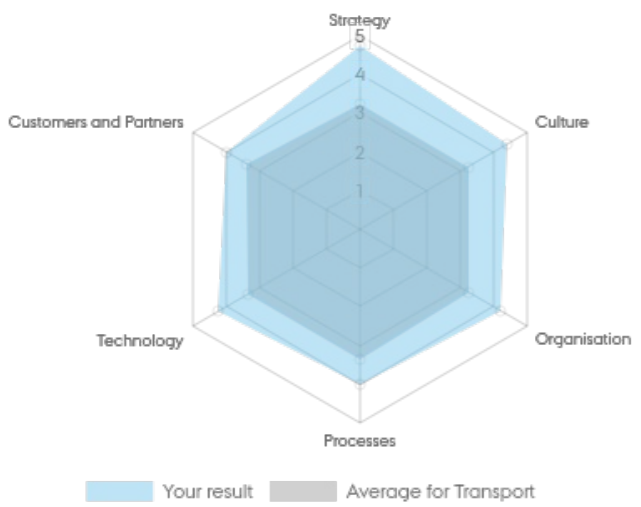
Emotion assumes a high level of digital maturity with an overall score of 4.27. The score indicates that the digital capabilities of the company are vastly mature, and that they perform above average for the transport sector.
The Digital Maturity Assessment Tool is copyrighted by Associate Professor and PhD Annabeth Aagaard, Director at the Interdisciplinary Centre for Digital Business Development, Aarhus University. To get the digital maturity of your company mapped out, click here.
[1] PLC (Programmable Logic Controller): Industrial computer used to control different electro-mechanical processes for use in manufacturing, plants or other automation environments.
[2] TCP (Transmission Control Protocol): Protocol that uses segments (packets) as the basic units of data transmission. Computer systems that communicate over TCP can send and receive data at the same time.
[3] OCPP (Open Charge Point Protocol): Open-source communication standard for EV charging stations and network software companies.
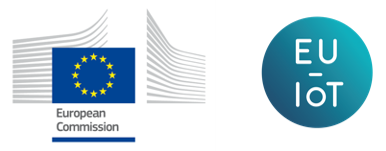
Copyright notice: © 2020 – 2023 EU-IoT Consortium.
This material was produced as part of the EU-IoT project, grant ID 956671, and is funded by the Horizon 2020 Framework Programme under topic ID ICT-56-2020.
EU-IoT is the European IoT Hub. The EU-IoT project works towards growing a sustainable and comprehensive ecosystem for Next Generation Internet of Things.
Source of origin: Information to document this use case originates from the H2020 call: ICT-56-2020 Next Generation Internet of Things (RIA); Project IoT NGIN 957246; Period: 01-11-2020 to 30-09-2023; EC contribution 8 mil. EUR.
